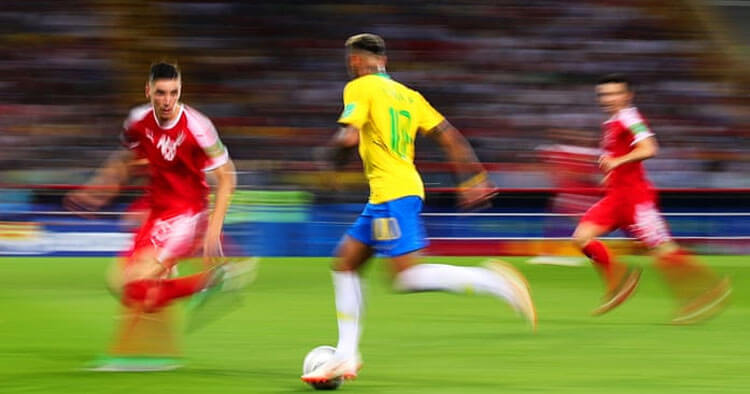Muscle Pain and Tendinopathy
Rectus Femoris Muscle And Injury
A Rectus Femoris Muscle Strain
Two joint muscles with type II muscles fibers such as rectus femoris (sometimes called rec fem for short) are considered high risk muscles for sustaining an injury. As a result rectus femoris muscle strain injuries are relatively common, more so than injury to any of the three other quadriceps muscles, which themselves are single joint muscles having their origin off the femur and therefore only capable of acting on the knee, unlike rectus femoris which can exert force at both the hip and knee. Rec Fem muscle is often injured while working to regulate hip and knee motion under significant or explosive load. Sprinting and kicking motions being the typical triggers for injury in a sporting setting. As a result a rectus femoris muscle strain is frequently seen in soccer players and other footballing codes, where the athletes are sprinting and kicking regularly throughout the match. The cause of this muscle strain is typically either an explosive forceful contraction, or forceful eccentric contraction. Such contractions are required in the action of sprinting from standing position, jumping or kicking a ball with significant force. In footballing preseason training and matches such an injury is fairly common, we have already seen a few rectus femoris injuries this season in our Randwick and Sydney physio practices. Often in this early stage of the season the injured individual has spent the “off season” not sprinting or kicking and then returns to their preseason sessions raring to go and the body, including rec fem aren’t suitably prepared to take this sort of load having de-conditioned to these actions over the summer break.
Types Of Rectus Femoris Muscle Strain
- Acute injuries to the muscle are usually felt centrally at the front of the mid to upper thigh.
- Chronic injuries to rec fem are usually felt closer to the muscle origin and more likely to involve tendon tissue.
- Another type of injury involving rectus femoris is an avulsion of the tendon origin at anterior inferior iliac spine (AIIS), an injury where the tendon and the bone at this site pull away from the origin. A relatively uncommon form of rec fem injury but when present it can be seen on X-ray and is more likely to occur in very active adolescents.
With classic acute mid belly rectus femoris muscle strains, symptoms are likely to present as a sudden sharp pain at the front of the thigh. Often this pain will later be accompanied with some local swelling and bruising. With complete tears to the muscle there may be a palpable, or visible dip in the muscle at the site of the rupture as the two free parts of the muscle retract away.
Physiotherapy Treatment For A Rec Fem Injury
The RICE (Rest, Ice, Compression and Elevation) principle is generally still appropriate with most acute rectus femoris muscle injuries, in an attempt to reduce further injury whilst managing pain and swelling. Once pain, swelling and functional limitations have improved, a more active rehabilitation approach can commence ideally in the first days following injury. Typically conservative treatment such as physiotherapy reaps good results, however following significant rectus femoris muscle tears there may be slight residual muscle strength deficit, with a delayed return to sports, and cosmetically a permanent visible dip in the muscle at the front of the thigh may be apparent.
Disclaimer: Sydney Physio Clinic does not endorse any treatments, procedures, products mentioned. This information is provided as an educational service and is not intended to serve as medical advice. Anyone seeking specific orthopaedic advice or assistance on Rectus Femoris Muscle And Injury should consult his or her general practitioner, sports medicine specialist, physiotherapist or otherwise appropriately skilled practitioner.


